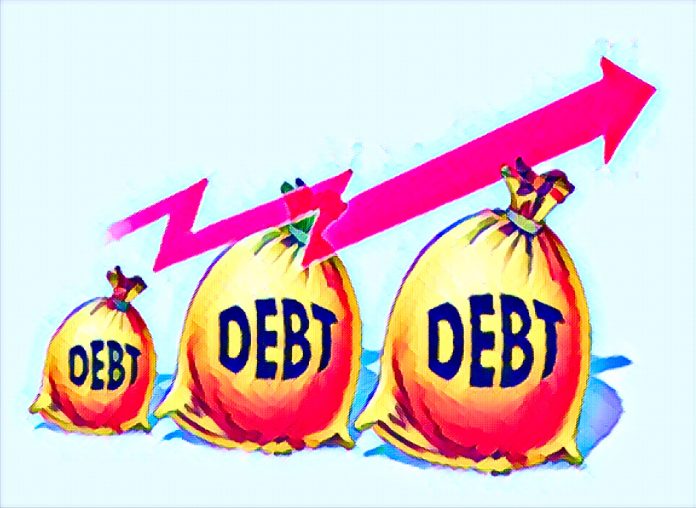KEY POINTS
- Nigeria’s debt grew by N55.2 trillion under Tinubu, with external borrowing accounting for N33.1 trillion of the increase.
- Debt servicing costs in Q4 2024 surpassed budgetary allocations, reaching N2.2 trillion amid currency devaluation pressures.
- Despite exceeding half of GDP, the total remains below the 70% sustainability threshold—though revenue challenges persist.
Nigeria’s total public debt stock has ballooned by N55.2 trillion since President Bola Tinubu took office in May 2023, according to official data from the Debt Management Office (DMO).
According to SaharaReporters, the figures reveal a sharp contradiction between the administration’s “Renewed Hope” promises to curb borrowing and its continued reliance on domestic and foreign loans to fund government operations.
As of December 2024, the federal government’s external debt alone had risen to N62.9 trillion—a N33.1 trillion increase from June 2023—while domestic debt climbed by N22.1 trillion to N70.4 trillion. Combined with other states, Nigeria reached N142.3 trillion, representing 51.3% of GDP.
“President Tinubu expressed his resolute commitment to break the vicious cycle of overreliance on borrowing for public spending,” read an August 2023 statement on the State House website. However, the latest numbers suggest this pledge remains unfulfilled.
Debt servicing now outstrips budgeted amounts
Central Bank of Nigeria (CBN) reports show the Tinubu administration spent N2.2 trillion on debt servicing in Q4 2024—exceeding both its quarterly budget (N2.07 trillion) and the previous quarter’s payments (N2.06 trillion).
Economists warn that rising costs could further strain Nigeria’s fiscal stability, particularly as the naira continues to depreciate against major currencies.
“The rise was due largely to revaluation effects from exchange rate depreciation and new borrowings to finance the 2024 budget deficit,” the CBN noted in its economic report. While Nigeria’s debt-to-GDP ratio remains below the 70% threshold for market-access countries, analysts caution that high interest payments—which consumed 96% of federal revenue in 2023—leave little room for critical infrastructure and social programs.
Finance Minister Wale Edun recently defended the borrowing strategy, arguing that “targeted investments in agriculture, energy, and transport will spur growth and reduce future debt burdens.” However, opposition lawmakers and civil society groups have demanded transparency on loan utilization, citing mismanagement risks.



